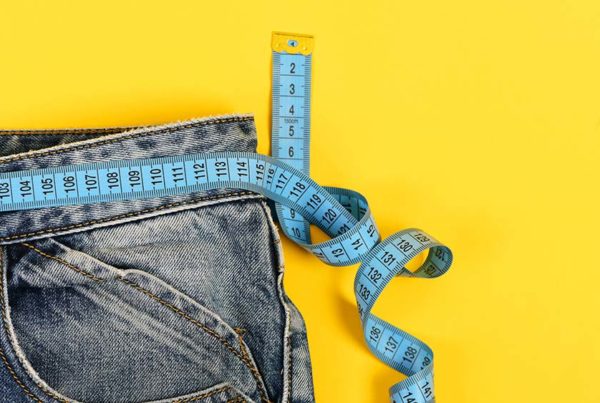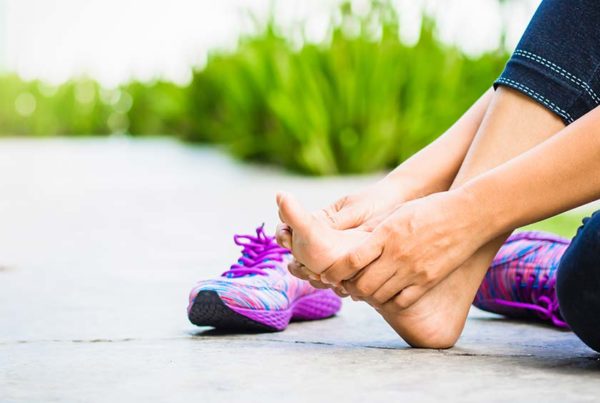Just Before the New York City Marathon (Yes, He’s Running Barefoot)
Christopher McDougall’s bestselling book, Born to Run, significantly influenced the consumer trend toward barefoot running and minimalist, low-tech footwear. While I was wrapping up my own book, The Big Book of Endurance Racing and Training with Skyhorse Publishing, Christopher visited me in Arizona to discuss his training, upcoming book project, and the barefoot running scene.
The Friday before the New York City Marathon, which he’ll run barefoot, Christopher will be hosting a special event called “Reinventing Running: The Thrill is Back.” The special occasion is modeled after the TED conferences, and guest speakers include Dr. Daniel Lieberman, Harvard’s “Barefoot Professor” and co-creator of the “Running Man” theory of human evolution; Coach Eric Orton, the wizard from Born to Run who rebuilt McDougall in time for the epic race against the Tarahumara; Barefoot Ted McDonald who will show everyone how to craft their own pair of Tarahumara-style racing sandals; and John Durant, New York City’s very own impresario of barefoot running and expert on hunter-gatherer athleticism. Doors open at 6 pm. The event will be held right by Central Park in New York’s Society for Ethical Culture. No shoes required.
For more information on this event go here.
And for those who can’t make the Big Night of Running in the Big Apple, my friend and editor Bill Katovsky interviewed Chris via email. Katovsky’s latest book is called Return to Fitness: Getting Back in Shape after Injury, Illness or Prolonged Inactivity. He now runs in Nike Frees—but without the insoles.
“I have 700 miles on them, I do a lot of hills and trail running—and so far, no injury,” says Katovsky. “I feel like a reborn runner, thanks in part to McDougall’s book.”
Q: I understand that you are going to run the New York City marathon barefoot! That gives new relevance to the old Neil Simon comedy “Barefoot in the Park!”
Chris McDougall: Just as long as it’s a comedy and not a tragedy!
Q: Are you concerned about potholes, glass, and debris along the 26.2-mile route?
Chris McDougall: Not a bit. We did an 8-mile barefoot run from Harlem to Brooklyn in the middle of August, and it was a total blast. My feet finished without a nick or twinge. One of the big benefits of running barefoot is extreme maneuverability—when you heel strike, your leg is committed to a locked position in front of you, but when you forefoot strike, your feet are nicely positioned under your center of balance, so you can pivot nimbly away from anything in your path. I’ve never cut or damaged my feet on a run.
Q: So how does it feel to be the “father” of the barefoot/minimalist running shoe modern-day movement?
Chris McDougall: Thanks, but I’m not the father. I’m the showboat son who arrives late to the party and pretends he threw it. I’m not saying anything that Phil Maffetone hasn’t been saying for 20 years. The minimalist movement has been gathering steam for quite some time. I was fortunate to come across a story that was a nice vehicle for combining the information about biomechanics and running form that has been accumulating over the last few years. Phil, Barefoot Ken Bob, Nicholas Romanov and Danny Dreyer, to name just a few, were in this fight long before I arrived.
Q: Have any of the major running companies contacted you or your publisher and said, “Wait a minute, modern running shoes are good for your feet! Stop spreading all this misinformation!”?
Chris McDougall: Nope, the shoe companies have been keeping a sheepish silence. Their only response has been to suddenly launch new lines of minimalist running shoes. I’m not surprised. They’re not in the business of educating people or even promoting good health; they’re in the business of selling stuff, so if you tell them their cushioned, motion-controlling products are actually the most destructive force to ever touch the human foot—as I have—they’re not going to argue back. They’re just going to sell you a different shoe.
Q: How many miles do you log each week? All barefoot?
Chris McDougall: I average about 60-80 miles a week, about 70% barefoot and 30% on trails in either Vibram Fivefingers or racing flats.
Q: Future races you plan on doing?
Chris McDougall: I’m not a big fan of big races. I like local events that I can roll up to at the last sec and have a beer on the grass afterwards. To be honest, I think these mega urban marathons are a lot of what is wrong with recreational running today.
Q: Do other runners and spectators know who you are? Though I imagine it might be difficult to stop and give them your autograph.
Chris McDougall: I was stunned this summer by how many people recognized me at the Leadville Trail 100. Of course, I was there with Barefoot Ted so I might have been basking in his reflected glory.
Q: Of the 30,000 or 40,000 runners in the marathon, what percentage do you expect to see going barefoot or in the Vibram Five Fingers?
Chris McDougall: Very few, I’d assume. At this point, the people who still control the message are the people who have been cashing for decades on the “Buy Expensive Orthotics And Fancy Shoes Or You’ll Get Hurt “scam. I’m talking about the podiatrists, running magazines, and even race directors. They’re all in the multi-billion dollar footwear business, and they’re still pushing scare stories on runners. Check just about any article you read on barefoot running, and you’ll always find some podiatrist warning that “more studies need to be done or we could see more injuries.” What a joke. Up to 90% of all marathoners who wear running shoes are injured every year, yet the podiatrists aren’t claiming we need more studies of the running shoe industry. The fact is, there has never been a single study in 30 years—knot one!—that indicate that running shoes do ANYTHING to prevent injuries.
Q: What is your prediction in say three or five years in terms of the evolution of the running shoe? Obviously, this could be the case that “less is more.”
Chris McDougall: I’m more interested in the future of running form. I couldn’t care less what people wear; I’m more concerned about what they do. For too long, all we’ve heard about is what to buy; what’s been missing from the conversation has been how to run properly. I’m convinced that the next big wave in running won’t be footwear, but a surge in running coaches who teach proper, gentle, barefoot-style form.
Q: If running is one of the few participatory sports with the highest rate of injury and athlete dropout, why then are most runners so resistant to change?
Chris McDougall: Well, give them time. Until a year ago, very few people were talking about barefoot running. I’m encouraged that despite all the bitter resistance from the running magazines and misguided medical specialists, the message has broken through to mainstream runners. We’re getting there.
Q: For those wanting to learn to run barefoot for the first time, any quick recommendations? Also, is there any risk of foot, ankle, calf, or knee injury?
Chris McDougall: The first and most important step is to change your form, not your footwear. You’re making a huge mistake if you think buying a pair of Fivefingers or Nike Frees is going to magically cure your bad habits. Changing footwear changes nothing. So start by going totally barefoot. Before you start running, check out Barefoot Ken Bob’s website (therunningbarefoot.com) for his pointers, and watch Lee Saxby’s short video on my blog. Those should be all the pointers anyone could need.
Q: Over fifty years ago, Abebe Bikila won the Rome Olympics marathon barefoot—this is the way he trained. He won in a record time of 2:15:16.2, becoming the first black African to win an Olympic gold medal. I guess we have come full circle! Care to comment?
Chris McDougall: To be fair, Bikila wore shoes in the following Olympics and ran even faster. No elite runner today would compete barefoot, and I don’t blame them. If my entire livelihood was hanging in the balance, I wouldn’t risk stepping on a bottle cap 50 yards from the finish line. But let’s keep in mind that pro runners are wearing only the thinnest, lightest shoes available. They would never wear the kind of motion-controlling, super-cushioned foamboats that Runner’s World is constantly pimping in their shoe review issues. They already know how to run barefoot-style, so all they want is some protection for their soles, just like the Tarahumara with their huaraches and Apaches with their moccasins. The goal isn’t to run barefoot—the goal is to learn to run properly, and bare feet are the most effective and trustworthy method.








